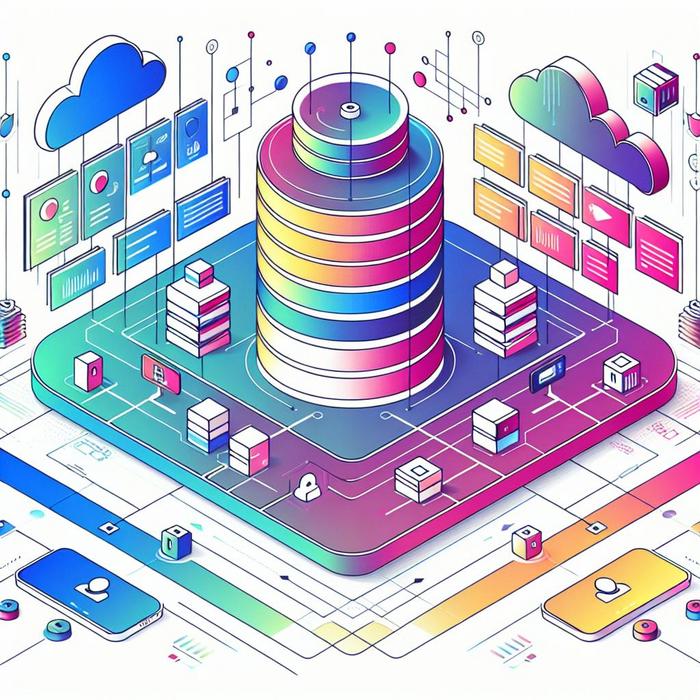Table of Contents Hide
What Is Observational Data in Statistics: A Deep Dive
 8 MIN. READING
8 MIN. READING
Understanding Observational Data In Statices
How can leveraging existing data resources unlock deeper insights and drive better business decisions? For CIOs, CTOs, data architects, and other IT leaders in large organizations, the effective use of data is paramount. This involves not just managing data effectively, but also understanding different data types and how they can be utilized for various purposes, especially for creating realistic, anonymized datasets for non-production environments.
Observational data, as the name suggests, is gathered by observing a phenomenon without influencing or manipulating any variables. This stands in contrast to experimental data, where researchers actively control and manipulate variables to determine cause-and-effect relationships. Consider the strategic advantages of harnessing real-world data to improve the quality of your software development and testing processes. Observational data offers a wealth of insights into how systems truly perform under realistic conditions.
Harnessing Real-World Data For Superior Software Quality
What are the practical implications of employing data from real-world operations to refine development and testing procedures? Database virtualization provides a powerful mechanism for leveraging observational data effectively. By creating a virtual layer, data from various production systems can be accessed without physically moving or copying it. This empowers teams with rapid access to realistic datasets for diverse needs, from application development and testing to analytical explorations. This is particularly useful for creating representative datasets for non-production purposes. Think of it as creating a blueprint of your production data that developers and testers can use freely without impacting the integrity or security of your live systems.
One key benefit of database virtualization is the ability to streamline data provisioning. Traditional methods of copying or restoring data can be time-consuming and resource-intensive. With virtualization, teams gain on-demand access to the data they need, significantly accelerating development cycles.
Furthermore, database virtualization contributes to cost optimization. By eliminating the need for numerous physical copies of data, organizations can reduce storage costs and simplify their data infrastructure. Studies have shown the positive impact of streamlined data access on project timelines and resource allocation. This streamlined approach can significantly reduce the overhead associated with managing multiple data copies for testing and development.
Ensuring Data Privacy And Compliance Through Anonymization
How can we ensure data privacy during the software development lifecycle? Data anonymization plays a crucial role in protecting sensitive information while still providing realistic data for development and testing. This process involves modifying data so that individuals cannot be identified, while preserving the statistical properties and relationships within the data. This balance is essential for ensuring rigorous testing without compromising privacy.
Database Virtualization And Anonymization: A Synergistic Approach
What makes database virtualization and data anonymization so powerful when combined? The synergy between database virtualization and data anonymization empowers organizations to create robust, privacy-preserving data environments. By applying anonymization techniques to virtualized data, teams can access and work with realistic data without exposing sensitive information. This combination allows for thorough testing in a safe and compliant manner. Observational data, when properly anonymized, provides invaluable insights into real-world usage patterns and system behavior.
- Faster Data Provisioning: Eliminate delays and empower your teams with rapid access to realistic data sets. This allows for faster iterations in the software development process and ultimately quicker time to market.
- Cost Optimization: Reduce storage costs and simplify data infrastructure by eliminating the need for multiple physical copies of data. Focus resources on innovation and development, rather than managing complex and costly data environments.
- Enhanced Security and Compliance: Implement robust data anonymization practices within your virtualized data environment to ensure the highest levels of data protection and compliance. This mitigates risks and fosters trust in your data handling practices.
Comparing Data Management Platforms
How do different data management platforms stack up when it comes to supporting these advanced techniques? While we won’t mention specific vendors, it’s vital to assess platforms based on their ability to facilitate database virtualization and data anonymization. Look for solutions that offer robust features for creating virtual data layers, integrating with various data sources, and applying diverse anonymization techniques. Consider factors such as performance, scalability, security, and ease of use when evaluating platforms. Understanding the different types of data and how they are processed is critical for effective data management.
- Integration Capabilities: Evaluate how well a platform integrates with your existing data sources and infrastructure. Seamless integration is crucial for efficient data flow and streamlined operations.
- Anonymization Techniques: Assess the range and flexibility of data anonymization techniques offered by the platform. Ensure it supports a variety of methods to meet your specific security and compliance requirements.
- Performance and Scalability: Consider the platform’s ability to handle large datasets and high volumes of requests. Choose a solution that can scale with your evolving needs.
Investing in a comprehensive data management platform with robust database virtualization and data anonymization capabilities can be a strategic advantage. Cloud solutions offer flexible and scalable options for managing and provisioning data. The ability to readily provision masked datasets for testing purposes is crucial in today’s fast-paced development environments. Automating compliance processes can further streamline operations and ensure adherence to regulatory requirements. Leveraging appropriate security testing tools is paramount in safeguarding sensitive data and maintaining compliance within your data management strategy.
Streamlining Development With Virtualized Data
How can organizations accelerate their software development lifecycle while maintaining data integrity and security? The use of realistic, yet anonymized data in non-production environments is critical for robust testing and development. Database virtualization offers a powerful solution, enabling teams to access and work with data that mirrors production without compromising sensitive information. This approach streamlines the development process, facilitates faster feedback loops, and ultimately leads to higher quality software releases. Consider the benefits of providing development teams with access to data that accurately reflects real-world scenarios. This allows for more thorough testing, identification of potential issues earlier in the cycle, and a more robust end product. Observational studies highlight the value of real-world data in understanding complex systems and behaviors.
Imagine a scenario where developers can instantly access representative data for a new feature without lengthy provisioning processes. This agility fosters innovation and enables rapid iteration, crucial in today’s competitive landscape. Furthermore, database virtualization eliminates the need for multiple physical copies of data, reducing storage costs and simplifying data infrastructure management. This efficiency frees up resources that can be redirected toward strategic initiatives and innovation.
Ensuring Compliance With Evolving Data Regulations
How can businesses navigate the complexities of data privacy regulations and ensure compliance while still leveraging valuable data for development and testing? Data anonymization is a key component of a comprehensive data governance strategy. By transforming sensitive data into non-identifiable forms, organizations can comply with regulations like GDPR, CCPA, and HIPAA while still maintaining the data’s utility for development and testing purposes. This ensures that data remains valuable for analysis and insights without jeopardizing individual privacy. Mastering data privacy regulations requires a multi-faceted approach encompassing technology, processes, and ongoing monitoring.
Consider the peace of mind that comes with knowing that your development and testing environments are utilizing anonymized data, mitigating the risks associated with data breaches and regulatory penalties. This proactive approach to data privacy builds trust with customers and strengthens the organization’s reputation for responsible data handling.
Optimizing Data For Mobile Application Development
How can mobile application developers leverage realistic data to create high-quality apps that meet the demands of today’s users? The mobile landscape presents unique challenges for data management, given the diverse range of devices, operating systems, and network conditions. Database virtualization, coupled with data anonymization, allows developers to test their apps against realistic data sets that represent the diversity of real-world usage patterns. This leads to more robust and reliable mobile applications. Optimizing test data for mobile applications requires specialized considerations to ensure accurate representation of real-world usage scenarios.
Think about the ability to simulate various network conditions, user behaviors, and data loads within a controlled testing environment. This enables developers to identify and address performance bottlenecks, optimize user experience, and ensure the app’s stability across different devices and platforms. Recent research has underscored the importance of realistic data in mobile application testing to ensure optimal performance and user satisfaction.
Choosing The Right Data Managment Platform
How can organizations select the right data management platform to support their database virtualization and data anonymization needs? Evaluating different platforms requires careful consideration of several key factors, including integration capabilities, anonymization techniques, performance, scalability, and security. It’s essential to choose a solution that aligns with the organization’s specific requirements and long-term data strategy. A thorough assessment of available options will ensure a successful implementation and maximize return on investment. Observational studies in the field of data management consistently demonstrate the benefits of a well-defined data strategy.
Consider a platform’s ability to integrate seamlessly with existing data sources, whether on-premises or in the cloud. This facilitates efficient data flow and minimizes disruption to existing workflows. Furthermore, the platform should offer a comprehensive suite of anonymization techniques, allowing organizations to tailor their approach to specific data privacy requirements and regulations. Bayesian statistics can be particularly useful in analyzing and interpreting observational data within these platforms.
Finally, performance and scalability are critical factors to consider, especially for organizations dealing with large datasets and high volumes of data requests. A robust platform should be able to handle these demands efficiently and scale to accommodate future growth. Decoding data masking techniques provides further insight into the importance of selecting the appropriate anonymization methods within a chosen platform.


